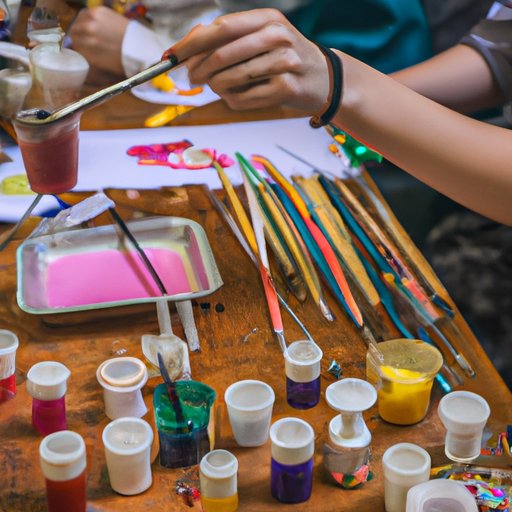Exploring Tempera Paint: Its Properties, History, and Techniques
Are you curious about the popular medium of tempera paint? As an artist or art enthusiast, it’s essential to understand the different types of paints available to you. Tempera paint is a unique and versatile medium, with a rich history dating back to ancient times. In this article, we’ll explore the history, properties, pros, and cons of using tempera paint, how to make it at home, and different techniques for using it as an artist or art teacher.
What is Tempera Paint and How is it Different from Other Types of Paints?
Tempera paint is a type of water-based paint that uses egg yolk or other protein as a binder. It creates a smooth, opaque finish that dries quickly and is water-resistant when dry. Unlike oil paints, tempera is not soluble in oils or turpentine and dries in a matter of minutes. In contrast to acrylic paints, tempera paint dries to a matte or eggshell finish, and it can’t be reworked after it has dried completely.
The History of Tempera Paint: From Ancient Egypt to Contemporary Art
Tempera paint has a rich history spanning thousands of years. Ancient Egyptians and Greeks used early forms of tempera paint on wood and other surfaces. During the 14th and 15th centuries, panel paintings in tempera were popular throughout Europe. Renaissance artists such as Botticelli, Giotto, and Michelangelo also used tempera paint in their masterpieces. In the 20th century, notable artists such as Andrew Wyeth, Jacob Lawrence, and Ben Shahn used tempera paint.
The Pros and Cons of Using Tempera Paint for Your Next Art Project
Tempera paint has unique advantages compared to other types of paint. It’s non-toxic, easy to clean, and easy to use. It’s also relatively inexpensive and can be used on many surfaces, including paper, wood, and canvas. However, tempera paint has some drawbacks. It dries quickly, making blending and layering difficult, and has a limited selection of colors.

How to Make Your Own Tempera Paint at Home Using Common Ingredients
Making your own tempera paint from household ingredients is simple and cost-effective. All you need is egg yolks, pigment, and water. Mix the egg yolks, pigment, and water together, and you have your own homemade tempera paint. Making your own paint allows for experimentation with color and texture while saving money on art supplies.
Exploring Different Techniques and Styles of Painting with Tempera Paint
Tempera paint is a versatile medium that can be used to achieve many different effects. Layering paint can create depth and texture. Mixing colors can produce a range of tones and hues. Blending colors can create a smooth transition between shades. Different techniques, such as scumbling, cross-hatching, and glazing, can further enhance the visual impact of the painting.
Tips and Tricks for Working with Tempera Paint: From Mixing Colors to Applying Layers
Working with tempera paint requires some basic knowledge and practice. Mixing colors to achieve the desired shade is more comfortable when starting with a small amount of pigment and gradually adding water. Applying too much paint can cause the surface to crack or flake. It’s best to apply thin, even layers of paint to achieve the desired effect. Cleaning tools and surfaces with warm water and mild soap after using tempera paint is simple and easy.
The Role of Tempera Paint in the Art Classroom: Ideas for Teachers and Students
Tempera paint is an excellent choice for classroom projects since it’s non-toxic and easy to use. Teachers can introduce different techniques and styles to their students, such as layering and blending. Classroom projects can range from simple paintings to more complex pieces, such as murals or collaborative works.
Conclusion
Tempera paint is an important and versatile medium, with a rich history and many unique properties. With its ease of use and non-toxic nature, it’s an excellent choice for artists of all ages and skill levels. Whether you’re making your own paint at home or working with it in a classroom, tempera paint is a valuable and rewarding medium.
